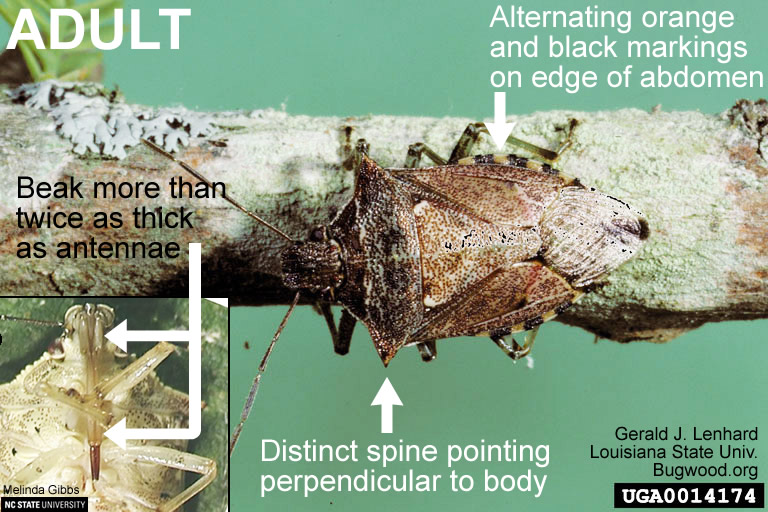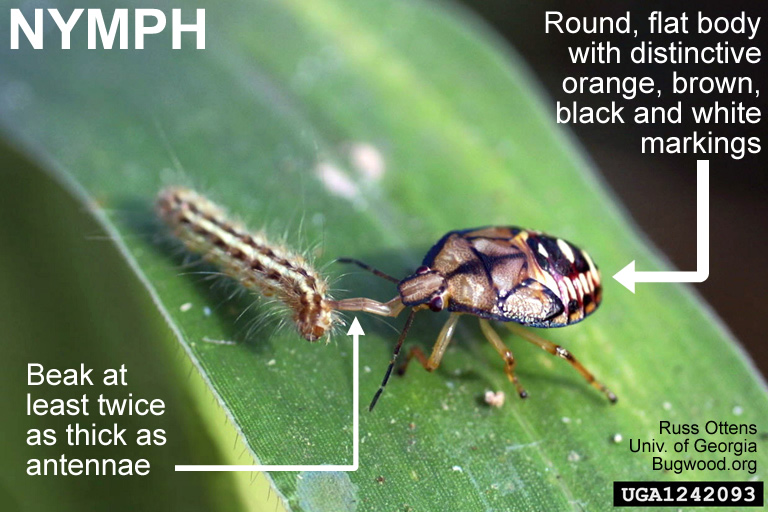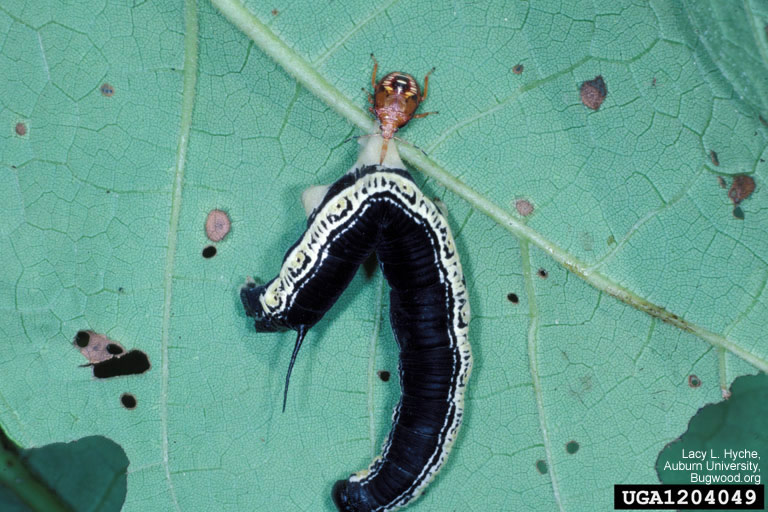Spined Soldier Bug
go.ncsu.edu/readext?562939
en Español / em Português
El inglés es el idioma de control de esta página. En la medida en que haya algún conflicto entre la traducción al inglés y la traducción, el inglés prevalece.
Al hacer clic en el enlace de traducción se activa un servicio de traducción gratuito para convertir la página al español. Al igual que con cualquier traducción por Internet, la conversión no es sensible al contexto y puede que no traduzca el texto en su significado original. NC State Extension no garantiza la exactitud del texto traducido. Por favor, tenga en cuenta que algunas aplicaciones y/o servicios pueden no funcionar como se espera cuando se traducen.
Português
Inglês é o idioma de controle desta página. Na medida que haja algum conflito entre o texto original em Inglês e a tradução, o Inglês prevalece.
Ao clicar no link de tradução, um serviço gratuito de tradução será ativado para converter a página para o Português. Como em qualquer tradução pela internet, a conversão não é sensivel ao contexto e pode não ocorrer a tradução para o significado orginal. O serviço de Extensão da Carolina do Norte (NC State Extension) não garante a exatidão do texto traduzido. Por favor, observe que algumas funções ou serviços podem não funcionar como esperado após a tradução.
English
English is the controlling language of this page. To the extent there is any conflict between the English text and the translation, English controls.
Clicking on the translation link activates a free translation service to convert the page to Spanish. As with any Internet translation, the conversion is not context-sensitive and may not translate the text to its original meaning. NC State Extension does not guarantee the accuracy of the translated text. Please note that some applications and/or services may not function as expected when translated.
Collapse ▲- Common Name: Spined Soldier Bug
- General Category: Beneficial Predator
- Taxonomic Classification: Hemiptera:Pentatomidae
- Scientific Name: Podisus maculiventris
Description
These bugs are very general in their feeding habits. Like all true bugs (Hemiptera) these predators have a beak. To feed, they swing their beaks up from under their bodies, sneak up to their prey and jab them with the harpoon-like tips. They inject digestive enzymes through the beak that soon render the prey immobile, after which they suck up the digested insides. This strategy can be highly effective, as these bugs can sometimes be seen subduing prey insects many times their own size (See Image 3).

Image 1. Spined Soldier Bug adult

Image 2. Spined Soldier Bug nymph

Image 3. This spined soldier bug nymph has subdued and is eating a catalpa sphinx moth larva (a type of hornworm, Ceratomia catalpae,) that is many times its own size.
Identification
Review the images for tips on how to identify these predators.
Adults
Like all predatory stink bugs, Podisus have beaks that are at least twice as thick as their antennae whereas plant-feeding stink bugs have beaks as thin as antennae. The adults have an alternating pattern of orange and black markings along the edges of their abdomens. The sharp spines on their ‘shoulders’ point straight-out from their bodies.
Nymphs
No wings. Beaks like adults. Bodies round and somewhat flattened, with distinctive orange, brown and black markings.
Value in Pest Management
These stink bugs are common natural control agents of a variety of plant-feeding insects and undoubtedly contribute to pest population regulation. They have been studied in depth as models for describing how generalist predators can contribute to insect pest management. They are sold commercially (see BIRC online Directory).
Origin and Distribution
Native, throughout eastern North America.
Discover Life – Podisus maculiventris


